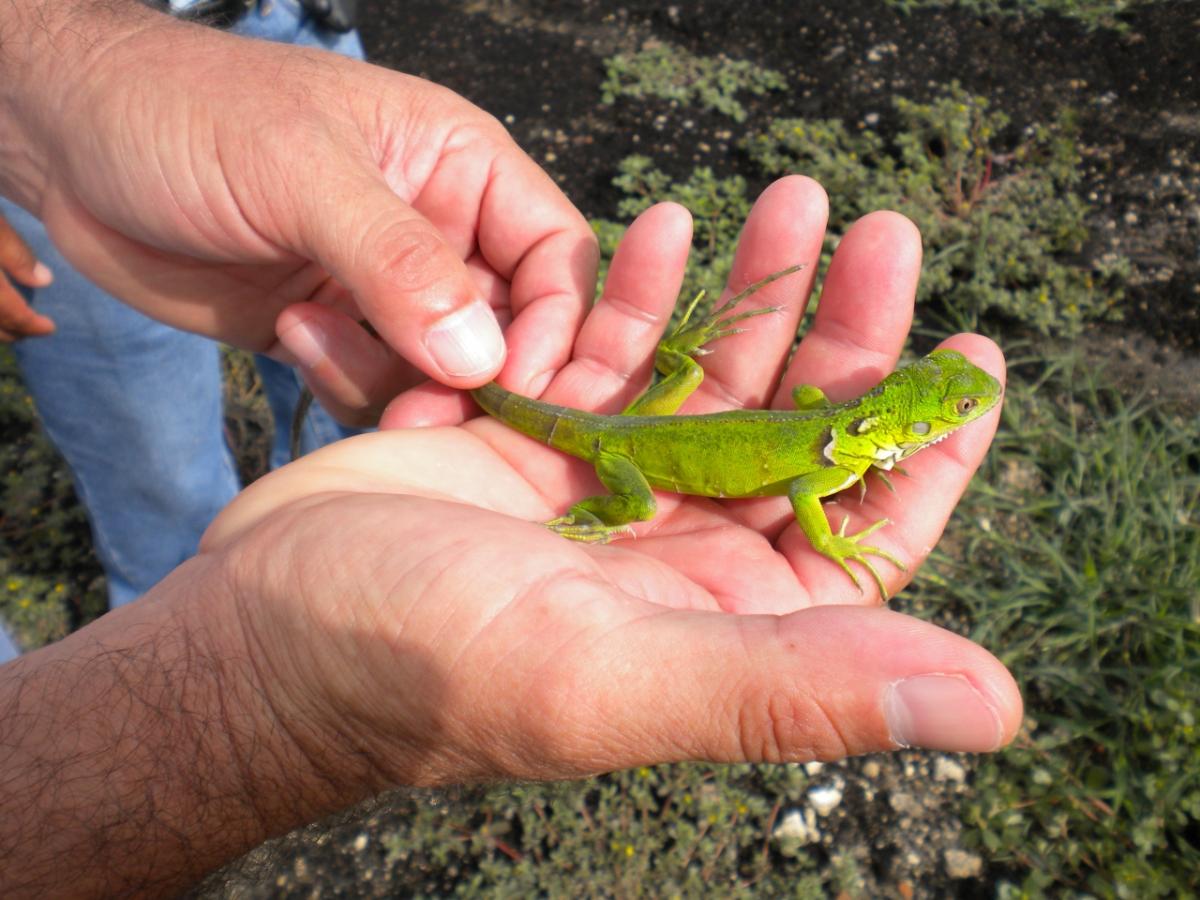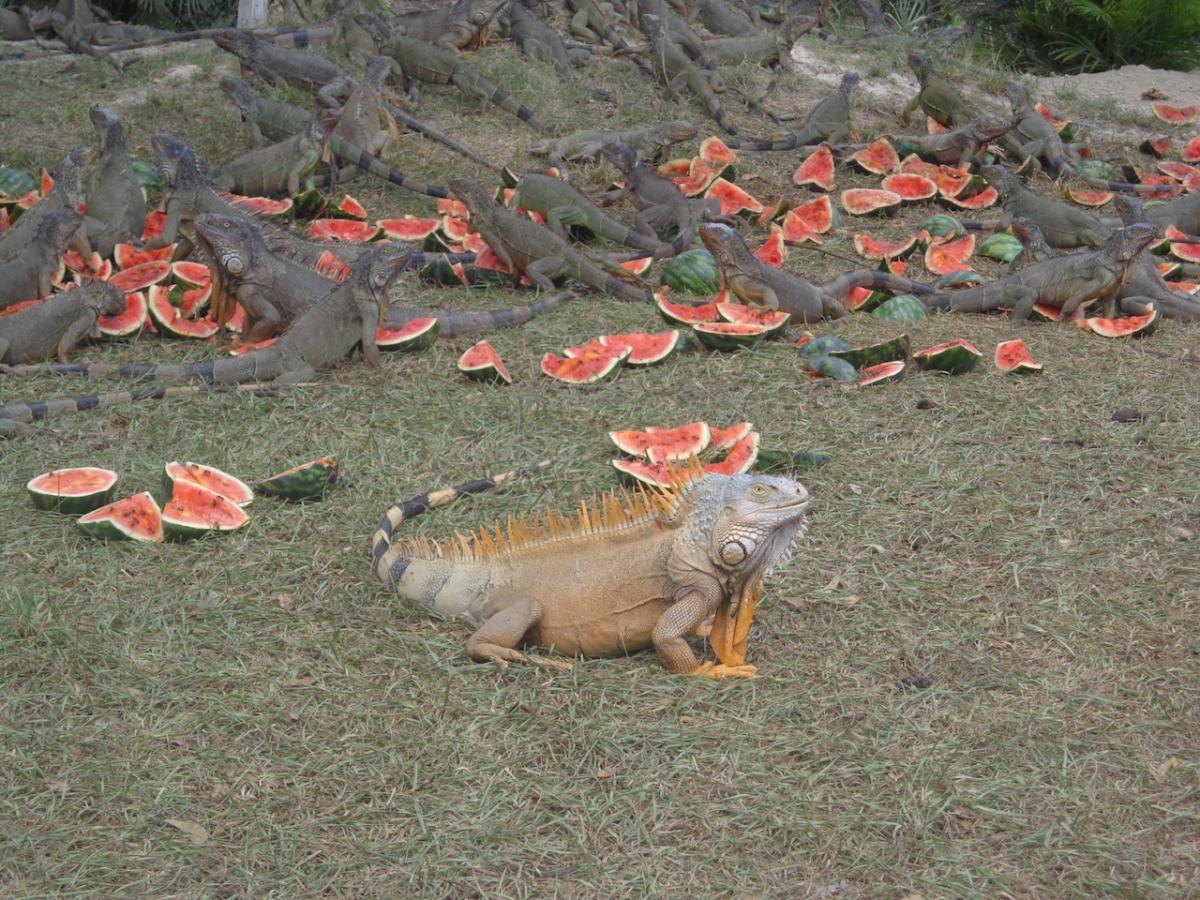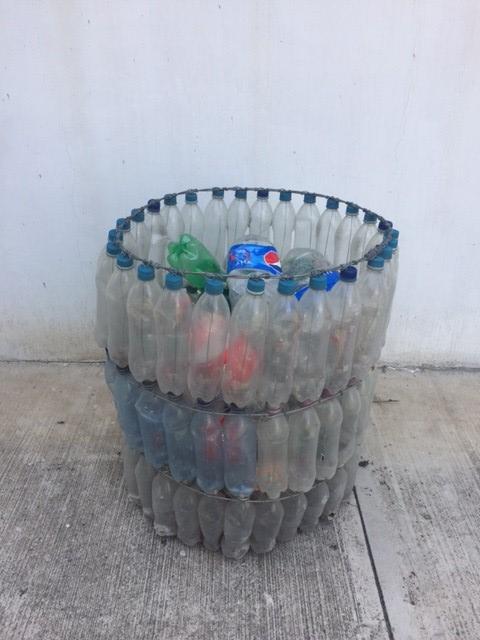A Feast for Iguanas
By Amy Zlatic Corporate Content Marketing Editor
Judging by their facial expressions, it’s hard to impress iguanas. The reptiles look like they are in a perpetual state of apathy, and possibly harboring a slow-burning grudge. In Guatemala, they had every reason to look like that.
The green iguana population there has dwindled significantly. Population growth, illegal hunting, and the mismanagement of resources – the environment’s usual enemies – had conspired to reduce their numbers to frightening levels. Thankfully, the people at Monsanto’s Research and Development site in Salama, a city in north-central Guatemala, helped come to the rescue in their community.
Now, the green iguanas around the Salama site have every reason to smile, although most often they look studiously bored while being happy and well-fed, much like typical American teenagers.
The land around the Salama site is rich in flora and fauna. The once-abundant ecosystem has been struggling, though, and Consejo Nacional de Areas Protegidas (CONAP, or The National Council for Protected Areas) declared more than 100 species endangered. The Council encourages government and private entities to collaborate on the protection of the environment.
In 1992, our team in Salama made a strong commitment to protect the environment around its site by launching the “Salama R&D Biodiversity Protection Program.” Its main purpose was to protect the green iguana, an endangered species, and included four essential steps:
- Protect the significant species of this area, mainly the green iguana and the fresh water turtle.
- Use and protect 10 hectares of land at the site to create a natural balance between all local species, including birds, reptiles, and mammals, in a human-free ecosystem.
- Protect young animals from natural predators until adequate repopulation is reached.
- Avoid over-interference that would result in an imbalance in another area.
Biodiversity
Today, the 10 hectares of protected area at the Salama site hosts a variety of different species, including birds, rabbits, armadillos, butterflies, and reptiles. The creek that crosses the land is home to many different aquatic species. Thanks to concerted efforts, more than 800 green iguanas now make the site their home. Instead of throwing away the fruits and vegetables, the team in Salama throws a feast for the iguanas. They gather regularly to eat peppers and watermelons discarded after seeding.
The habitat has also been improved by planting a variety of trees, including cedar, orange agate, mahogany, teak, Chilean citronella, neem, eucalyptus, southern silky oak, pink poui, and Australian pine. This area is open for local schools and universities to take guided tours where students learn how to preserve our ecosystems. The site even has a tree nursery for internal reforestation, and Monsanto makes saplings available for off-site reforestation efforts.
Thanks to all these efforts, the site has increased the green iguana population, raised awareness about caring for the environment among local citizens and university students, and provides protection for a rich variety of species.
Waste Management
While waste is an unavoidable byproduct of any manufacturing endeavor, it is important to be environmentally responsible when arranging for disposal. The best options are to reduce, reuse, or recycle, and the Salama site has developed creative ways to implement these options, always striving to protect water, air and soil. Beginning in 2016, site management created a team to actively manage the site’s waste through eco-friendly solutions wherever possible. The sustainability team then worked to educate the rest of the site.
Everyone at the site is charged with continually seeking ways to reuse by-products such wood, plastic containers, paper, boxes, water, substrate, and PVC pipes. Within their specific areas, employees make a concerted effort to move to eco-friendly materials, and then they share their results with the rest of the site. For instance, one group sourced new greenhouse plastic with a longer life, which means it needs to be replaced less often.
They are also working to find a local company to recycle the plastic. Employees have also found creative ways to reuse materials, constructing a variety of helpful items for the site from plastic waste. Perhaps one of the most visible improvements is the site’s new waste sorting area. Instead of sending all waste to a landfill, employees now sort paper, cardboard, PET plastic, metal and more by type and send it off for recycling or reuse.
The team has also begun to compost its abundant organic waste materials. Everything from crop debris to waste from the seed production area to excess food from the dining hall is composted and used to enrich the land around the buildings. Because the team is now keenly aware of non-recyclable materials, the site uses more environmentally-friendly products to divert as much as possible from the landfill. What cannot be diverted is stored in a designated area and disposed of by a certified waste management company.
In 2016, the site produced 18 metric tons of waste, and recycled 55% (11.6 metric tons). Employees and management are highly engaged in the site´s sustainability program, and are proud that the site serves as an example for other organizations. CONAP now promotes Monsanto’s efforts and shares its sustainability success with schools, universities, local companies, and government agencies. Even the iguanas have something to smile about now.
Monsanto’s Salama Vegetable Research and Development Station provides support to several vegetable breeding programs, including tomatoes and peppers (solanum crops), cucumbers, melons, and watermelon (cucurbits), plus sweet corn and onions. Through 3 cycles of cucurbit crops and 2 cycles of solanum crops each year, they provide seeds for plant breeders to use.




